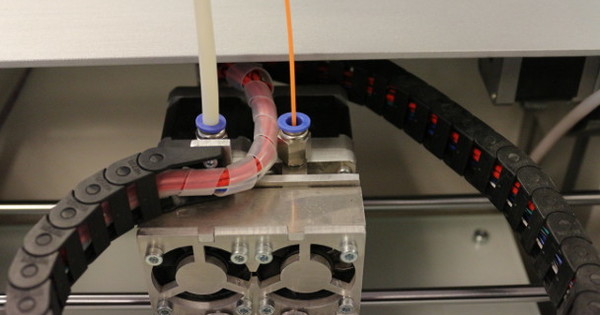After a few years, every PC noticeably suffers from wear and tear. The system case gets very hot, the hard drive keeps rattling and programs start up excruciatingly slow. Time to roll up your sleeves! With the tips in this article you will never again suffer from a slow PC.
Tip 01: Dusting
With systems that have been around for a while, it makes sense to give everything a thorough dusting, and then we're talking about the inside of the system cabinet. When fans and cooling holes are clogged, the temperature inside the housing rises considerably. The result is that various hardware components can no longer perform at their maximum, such as the video card and processor. You can easily open the housing of a desktop PC by loosening two screws, for example. With a laptop you can sometimes detach the back, after which you can easily get to the fans. Otherwise, at least try to clean the ventilation holes.

Work safely
To be able to upgrade the hardware of your computer, good preparation is important. First of all, you need to find out which hardware you need and which items are compatible with your PC/laptop. Make sure you have a good tool kit with small and magnetic screwdrivers on hand. The latter is especially important, because the chance that you drop the screws and lose them is a lot smaller. It is preferable to store loose screws in a container (per type). In addition, you ensure a stable surface when you open the computer, but also an anti-static environment.

Tip 02: Extra memory
Windows 10 is ideal for multitasking, for example by using the virtual desktops. This may cause you to use more programs at the same time compared to previous Windows versions. In order to have a pleasantly running system, the system must have sufficient memory. We recommend at least 8 GB. This allows you to use the somewhat heavier applications simultaneously. If you only want to surf or do a lot of work in the cloud, you can in principle do with 4 GB.
You simply check whether there is a memory shortage in your system. Open all the programs you normally use at the same time, for example a photo editor, music service, chat client, word processor, e-mail program and browser with multiple tabs. Once everything is up and running, press the keyboard shortcut Ctrl+Shift+Esc to open the Task Manager tool. Navigate to the tab Performance and click Memory. You can see exactly how much memory capacity is still available. When about eighty percent of the memory is reserved, it pays to add extra memory. Visit the website www.memory.com to find out which ram modules are compatible with your PC. You can also expand the memory on some laptops.
 For a smooth running system, it must have sufficient memory
For a smooth running system, it must have sufficient memory Tip 03: Mount memory
Assembly is easy, because you only have to click the ram modules into a free memory slot. The operating system automatically recognizes the new memory. Before purchasing, pay attention to how much ram and which memory type the motherboard of a desktop PC or laptop supports. In addition to the capacity, the speed of the working memory also plays an important role. This property is stated in the specifications in megahertz (MHz). The higher this value is, the faster the working memory performs, but your computer must be compatible with this.

Tip 04: Higher clock speed
You can also use Task Manager to control other things. If you open this utility again, but this time navigate to Performance / Processor, you'll see what percent of the available computing power is currently in use. At a high percentage, it makes sense to overclock your processor, provided your CPU supports this function. Due to a higher clock frequency, the system performs faster, because more calculations are possible within the same time. The chip manufacturers Intel and AMD introduce a wide safety margin in the production of many processors, so that it is best to set a somewhat higher clock frequency.

Risk overclocking
There is a risk associated with overclocking, especially overheating and faster wear and tear can cause problems. In addition, the warranty may become void. It is good to know that in practice it hardly gives any problems to increase the clock frequency by roughly twenty percent, but overclocking is not completely without risk. Upgrading the processor can be done in two ways. You can manually enter the settings in the bios or uefi. That's not an everyday job, so you have to know what you're doing. Fortunately, modern motherboards often come with special software that makes it easier to overclock. Using ready-made profiles, it is easier to increase the processor speed.
Tip 05: Stress test
Have you set the processor to a higher clock frequency? By means of a stress test you continuously expose the system to a maximum load. That way you can easily find out whether the increased clock speed has adverse consequences for the stability of the system. You call on Prime95 for this. In this program, select the settings Just Stress Testing and In-place large FFTs to perform the stress test. Then let the program run for a few hours. Does the system fail? In that case, the computer remains stable under a high load and the overclocking is successful!
 With a stress test you expose the system to a maximum load
With a stress test you expose the system to a maximum load Tip 06: Faster processor
Is overclocking not possible or does it not produce the desired effect? You can of course also choose to build in a faster processor. For example, it pays to replace a relatively slow Intel Core i3 processor for a Core i7 one. Purchasing a CPU is often a pricey affair, because this is usually the most expensive part of the PC. Moreover, the choice depends on the available socket on the motherboard. Therefore, check the motherboard specifications to see which type of socket your PC accepts.

Tip 07: Hardware acceleration
Some video cards give the processor a hand by taking over certain computational tasks. Favorable, because the processor thus has more computing power for other things. One condition is that the software used supports hardware acceleration by the video card. The well-known manufacturer Nvidia produces GeForce cards with support for CUDA.
Heavy applications that can handle this programming environment run a lot more smoothly on your PC. Adobe Premiere Elements Pro, AutoCad and some games, among others, support this technology. AMD's video cards rely on the OpenCL programming code to perform heavy computational tasks. If you want to relieve the processor, you can therefore consider building in a video card with support for hardware acceleration.


